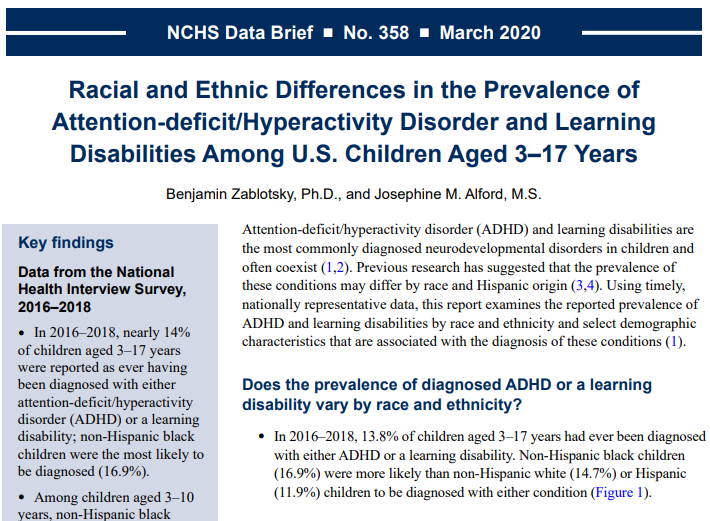Racial and Ethnic Differences in the Prevalence of Attention-deficit/Hyperactivity Disorder and Learning Disabilities Among U.S. Children Aged 3–17 Years
Posted on byAttention-deficit/hyperactivity disorder (ADHD) and learning disabilities are the most commonly diagnosed neurodevelopmental disorders in children and often coexist.
Previous research has suggested that the prevalence of these conditions may differ by race and Hispanic origin.
Using timely, nationally representative data, this report examines the reported prevalence of ADHD and learning disabilities by race and ethnicity and select demographic characteristics that are associated with the diagnosis of these conditions.
Findings:
- In 2016–2018, nearly 14% of children aged 3–17 years were reported as ever having been diagnosed with either attention-deficit/hyperactivity disorder (ADHD) or a learning disability; non-Hispanic black children were the most likely to be diagnosed (16.9%).
- Among children aged 3–10 years, non-Hispanic black children were more likely to have ever been diagnosed with ADHD or a learning disability compared with non-Hispanic white or Hispanic children.
- Diagnosis of ADHD or a learning disability differed by federal poverty level for children in all racial and ethnic groups.
- Diagnosis of ADHD or a learning disability differed by parental education among non-Hispanic white children only.
Posted on by
Page last reviewed: March 4, 2020
Page last updated: March 4, 2020
Content source:
CDC, National Center for Health Statistics


